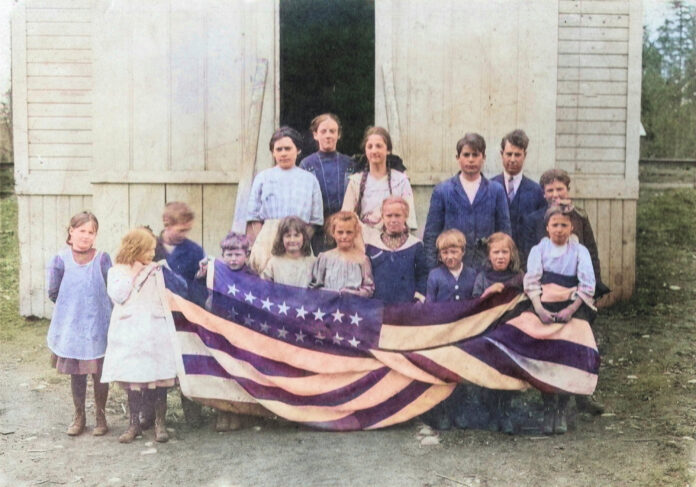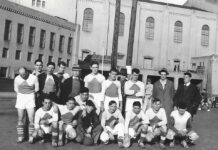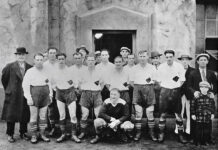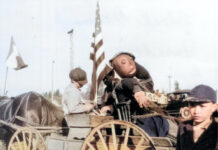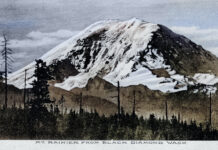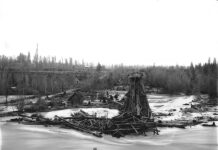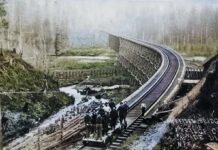Over the past century, Congress adopted 48 days, weeks, or months for patriotic or national observances. Some are well-known, like Mother’s Day, Father’s Day, and Memorial Day. Most are unknown such as Pan American Aviation Day, Stephen Foster Day, Leif Erikson Day, National Forest Products Week, and Steelmark Month.
Flag Day fits somewhere in between. Few Americans can correctly identify its date of observance, June 14, or the week following that’s dedicated to flying the U.S. banner. Though 86% of Americans can correctly say there are 50 stars, only about three-quarters know there are 13 stripes. About half of Americans say they have a U.S. flag at home.
Bernard Cirgrand, a grade school teacher in Waubeka, Wisconsin held the first recognized observance of Flay Day in 1885. After 30 years of advocacy, Woodrow Wilson declared June 14 as Flag Day in 1916, a year before the U.S. entered World War I. In 1949, Congress established June 14 as National Flag Day, though it is not a federal holiday.
When the children and teachers of Kummer, Washington assembled near the schoolhouse steps for this 1913 photo, there were only 14 students in the Kummer School. That same year the U.S. flag grew to 48 stars with the recent addition of New Mexico and Arizona. The new flag’s 48 stars were assembled in a rectangle of six rows each with eight stars. The school had likely received the new flag and gathered to celebrate. The 48-star flag remained the same for nearly five decades until 1959 when Alaska and Hawaii were admitted as the 49th and 50th states.
Kummer was a small coal and clay mining town located south of Black Diamond on the Green Valley Road. The resource-rich area was discovered by Jacob Sants in 1888 and named for George Kummer, a ceramist and engineer for the Denny Clay Company. The Columbia & Puget Sound Railroad extended a branch line to Kummer in 1897. There were 33 students listed on the 1896 Kummer school census. This 600-sf schoolhouse was built circa 1898 with its water source from a well.
The Denny-Renton Clay and Coal Company, which had extensive operations in Taylor, east of Hobart, owned the town. Corporate ownership changed hands but shale and fire clay continued to be mined. Coal was also mined at Kummer into the 1950s by the Johnson Coal Company, Richard Wetten and Campbell Co., and finally Palmer Coking Coal Co. which closed the last Kummer mine in 1956.
One of Kummer’s most prominent early families was that of John Henry Pritchard, who served as the mine superintendent until he was killed in 1894, after being crushed while riding a horse-drawn coal car. Bayard T. Plass moved his family nearby and in 1920, purchased 77 acres of timberland from Pacific Coast Coal Co. The Plass Road, also known as 257th Ave. S.E. was named in his honor.
The Callero family is another well-known Kummer name. Domenico and Rose Callero immigrated to the area in 1899 where Domenico found work in the Black Diamond coal mines. The couple bore seven children and many third and fourth-generation offspring continue to live in the area. Domenico acquired the Kummer schoolhouse in 1930. After moving it from ‘Johnson’s Hill’ to his property, it was converted it to a barn. After his father died, Andy Callero, the second-born son, acquired the property in 1962 and revitalized the little red schoolhouse where he, his brothers, and sisters were once schooled.
Callero later owned and operated Andy’s Place, a gas station and tavern located at the intersection of Green Valley Road and Highway 169. The gas station closed down but the tavern and café remained, later called the Boondocks when operated by Joe and Marie Webby. Today the same commercial property at 24838 Enumclaw-Black Diamond Road is owned by Granite Tile, Inc.
The school closed down in 1918 when the Kummer district was absorbed into Black Diamond which in turn was annexed to the Enumclaw School District in 1975. Five of the 14 students were identified on the back of this photo that originally belonged to Andrew Callero. Front row: Margaret (Plass) Dodge –2nd from left holding the flag; Louis Callero – 4th from left above the first star; Annie (Mustonen) Peltola 7th from left in a blue dress with white collar. Second Row: Frank Callero – 4th from left in a blue coat and white shirt; Andrew Callero 6th from left on the end. The two teachers are 1st and 2nd from left standing on the stairway with one older girl.
The former Kummer school building, later expanded to 1,140 sf, still stands on tax parcel 262106-9003. It is privately owned by Daniel and Deanna Humphreys who live next door. The red schoolhouse is located on the south side of S.E. Green Valley Road, 200 feet west of its intersection with 257th Ave. S.E. The side of the building is painted in bold letters reading, “This is Kummer, formerly School District 123, home of the lonely red schoolhouse.”
This photo and other information about the Kummer school come courtesy of JoAnne Matsumura, an Issaquah historian and collector. Photo colorization was performed by Boomer Burnham, a Tahoma instructor who operates http://www.boomersphotography.com/

